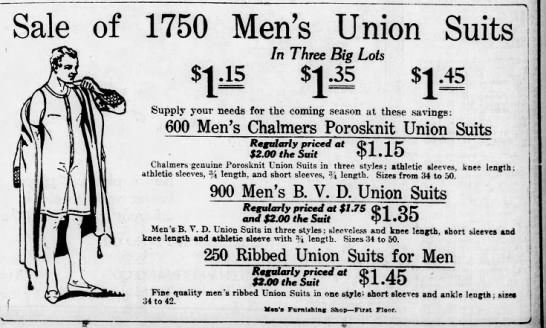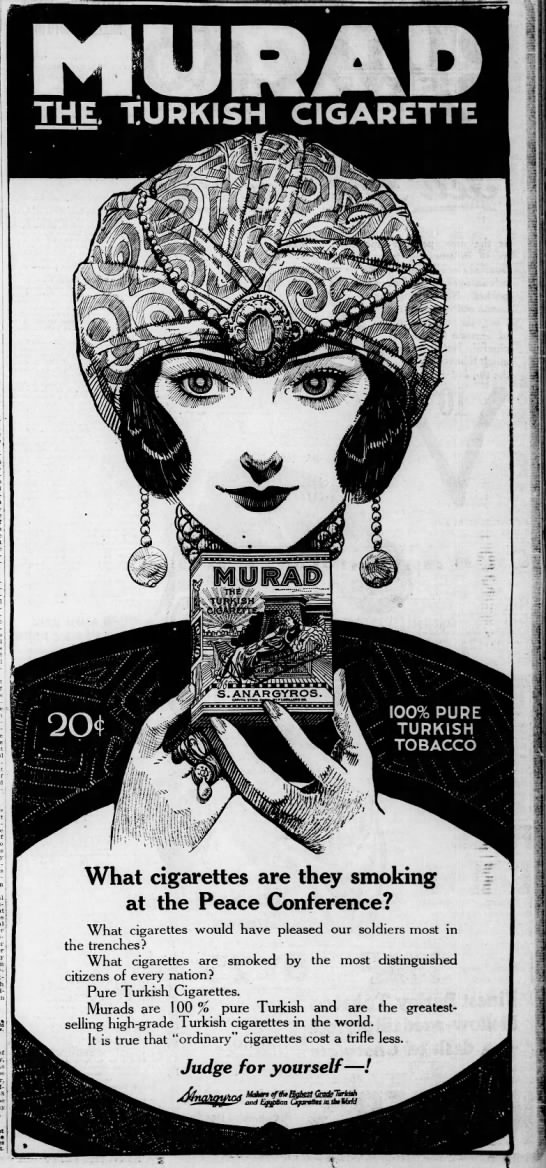Each week this year I am sharing from the 1919 diary of Helen Korngold. Helen was a student at Washington University in St. Louis. She became a teacher with a long career before marrying Fritz Herzog, a renowned mathematician. I include notes from my research into the people, places, and events Helen mentions.
 |
| Helen Korngold, Dec. 1919, New York City |
April
Tuesday 8
School – good classes. Lil Tiger – Ev. Cohn & Ed Siff were up in the evening – rehearse for law case. Anna & husband Lustig also came up.
Wednesday 9
School – played basketball – went to Pauline Carp’s – practiced – studied. K received letter from Summer.
Thursday 10
School – home- sleep- solo & orchestra playing Thurs. Eve at Naphtali lodge – Masonic order – home- write letters to Ida & Ruth.
Friday 11
School – almost fell asleep in Well’s class – driest thing on earth. Dancing. To Temple with Harry Vogel.
Saturday 12
School – good classes. Study till 4 – walked a bit with Pauline – went to see grandma & came home. Study & work on Ed. topic in evening.
Sunday 13
Herbert Pawlinger came to St L. He’s the sweetest, handsomest, finest chap in 2 hemispheres, Karol excepted. He & pop had an accident but they came out whole. Herb had dinner with us. We went to trial at Temple in evening – it was wonderful – danced till 12 bells.
NOTES:
April 8
Lillian Rosalind Tiger was in the 1922 Senior class of Washington University. She appears on the 1920 St. Louis Census, age 19, living with her father Isodore, born in Russia, Jewish, and working as a ‘jobber’ in the clothing industry. Her mother was Bessie Cohn Tiger. Her sister Ethel and brother Louis were clothing salesmen. According to the 1913 Gould Directory, Isodore resided on Russell Rd in St. Louis.

Evelyn Cohn appears on the 1920 census as Jewish Russian born September 26, 1898. She worked as a stenographer in a shoe company. Her sister was a 'steno' with a paper company. They lived with their mother widowed Ida along with two more sisters. The 1929 St. Louis city directory shows she was a saleswoman at the Grand Leader Department Store. Evelyn died in October 1975 in West Palm Beach, FL.
Anna and Edward Lustig appear on the 1920 St Louis Census where he worked as a jobber in ladies ready to wear.
April 10
Naphtali Lodge #25 was chartered on October 14, 1839, and is the only remaining Blue Lodge that still meets at the New Masonic Temple in St. Louis, MO. http://www.blogger.com/profile/13485702033465159118
A history of Free Masonry and Judaism can be found here: http://www.masonicworld.com/education/files/mar05/freemasonry_and_judaism.htm
April 11
Article from the Jewish Voice
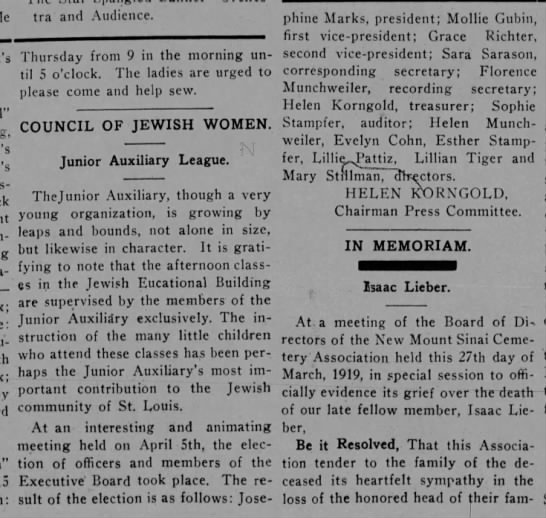
Several Harry Vogels can be discovered. Harry Fred Vogel was a grocer in 1900. Harry Vogel in later city directories is a restaurateur. On the 1910 Census, a Harry Fred Vogel and son Harry Fred Vogel worked at a car company. Harry Vogel born 1895 is a clerk on the 1916 city directory. WWI draft registration shows a Harry F. Vogel, Jr. born in 1890 in the U.S. Another WWI draft registration shows a Harry Vogel born in 1888 in Germany. A WWII draft registration shows Harry Fred Vogel born in St Louis and living in Indianapolis, Indiana and working for Los Angeles machinery supply.
April 13
Herbert Lincoln Pawliger (2/121894 to 11/1967) lived with his family at 1915 Broadway in New York City.
His WWI Draft Registration shows he was of medium height and build with brown hair and eyes. He was a clothing salesman for Jay Tee Frocks.
On the 1910 New York Census was 16 and living with his family Max, 48 born in 1882, and a manufacturer of furs; Nettie, 40, born in 1883; Arthur, 19 and a salesman; and Ruth E. age 14 and born in 1895.
On the 1920 New York Census, he was in commercial sales, living with his parents and Arthur, a photographer, and Ruth who was a clerk at Standard Oil.
On the 1925 New York City Census he was living with his family: father Max Pawliger, who was a fur merchant in the company of Pawliger and Staubsinger; mother Nettie; and siblings Arthur and Ruth E.
The 1930 New York Census shows Herbert and his family the same as the 1930 information.
Hebert’s WWII Draft registration shows he worked at Jay-Tee Frocks and was married to Minna. They had a child Winifred.
In December Helen and her parents and at least one sister visited the Pawlings in New York City in December at the invitation of Ruth Pawling.
April 13, 1919 ads from St. Louis Post-Dispatch
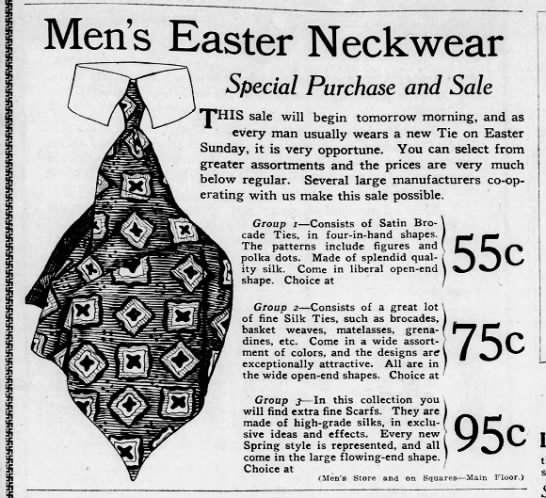 |
Stix, Bauer & Fuller ad
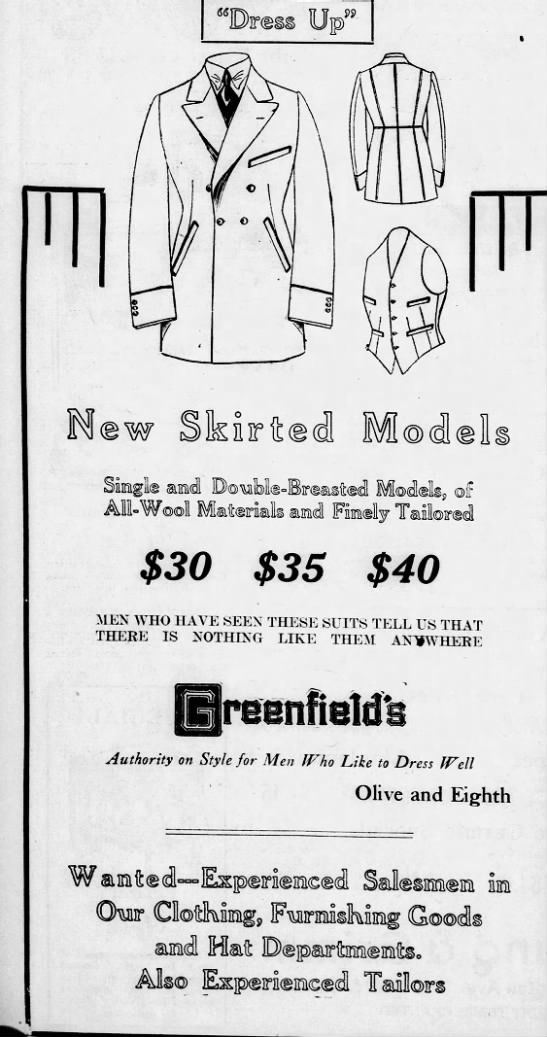 |
